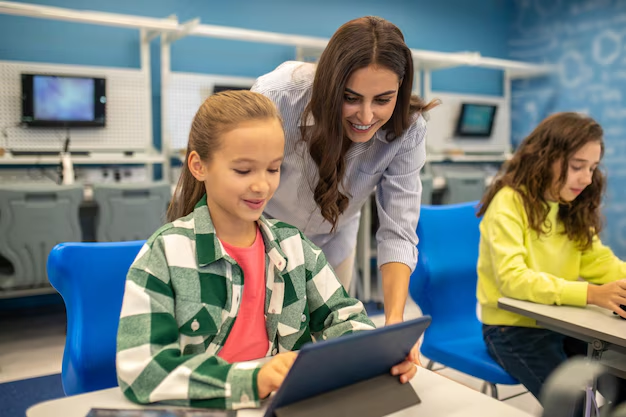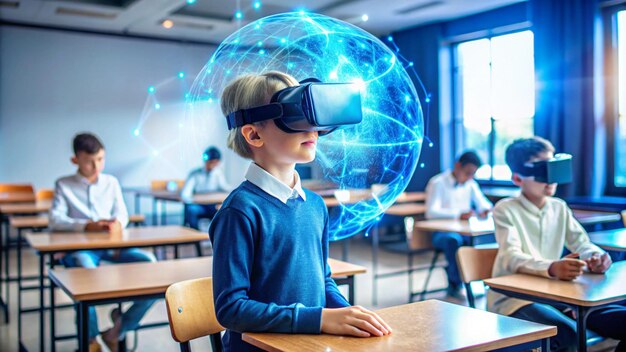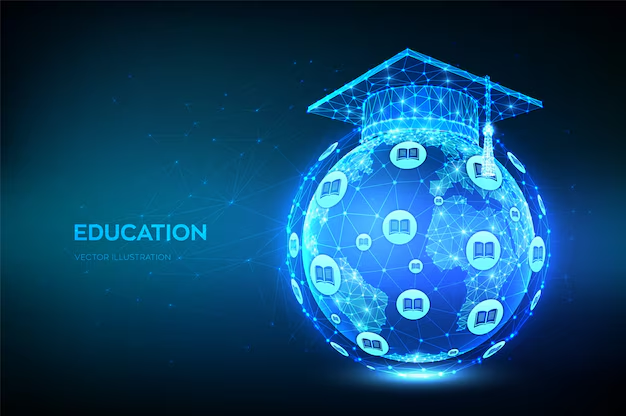The educational landscape is rapidly evolving, and technology is at the forefront of this transformation. Traditional teaching methods are giving way to innovative, tech-driven solutions that not only enhance learning but also offer students and educators new opportunities for growth. In this article, we’ll explore how embracing technology in education is redefining the way we learn, teach, and prepare for the future.
Keywords: redefining education, technology in education, digital learning tools, online education, future of learning, smart education, educational technology, tech-driven classrooms, digital classrooms, modern education
1. The Shift Toward Technology-Enhanced Learning
For decades, education has been synonymous with the traditional classroom model: textbooks, chalkboards, and face-to-face interaction between teachers and students. However, with the rise of technology, the education system has evolved to offer more dynamic and personalized learning experiences. The integration of technology into classrooms has paved the way for a more interactive, engaging, and flexible learning environment.
- Digital Tools and Platforms: Tools like smartboards, tablets, and e-books are now common in classrooms, transforming how students access and interact with content.
- Interactive Learning: Instead of relying solely on lectures, educators can use online simulations, games, and videos to create more engaging lessons that promote active learning.
- Key Point: Technology enhances student engagement and provides a more diverse set of tools to tailor education to individual learning styles.
- Further Detail: With a tech-savvy approach, students can explore subjects deeply, collaborate virtually, and access a wealth of resources that were once inaccessible.
Keywords: interactive learning, digital education, learning tools, tech-enhanced classrooms, education transformation
2. Online Education: Making Learning Accessible for All
One of the most profound shifts in modern education is the rise of online learning. Platforms like Coursera, Khan Academy, and Udemy provide students with access to high-quality courses, often at no cost, making education more accessible than ever before. Whether you’re a student in a rural area or an adult learner looking to upskill, online education removes barriers to learning and opens doors for personal and professional growth.
- Access to Global Learning Resources: Online education allows students to take courses from top universities and institutions worldwide, bringing the classroom to their fingertips.
- Flexibility in Learning: Students can learn at their own pace, fitting education into their busy schedules, and revisiting lessons when necessary.
- Key Point: Online learning empowers students to take control of their educational journey by providing them with options and flexibility that traditional education cannot always offer.
- Further Detail: This mode of learning is reshaping education globally, especially as it allows individuals in underserved areas to access world-class educational content.
Keywords: online learning, accessible education, e-learning, distance education, global learning resources
3. Personalized Learning with Technology

One of the greatest advantages of incorporating technology into education is its ability to cater to individual learning needs. With the use of learning management systems (LMS), AI-driven tools, and adaptive learning platforms, educators can offer personalized learning experiences that adapt to each student’s pace, strengths, and weaknesses.
- Adaptive Learning Platforms: AI-driven tools assess student performance and adjust lessons to provide the right level of challenge, making learning more effective and engaging.
- Data-Driven Insights: Teachers can use data to monitor student progress, identify areas where students may be struggling, and provide targeted support where necessary.
- Key Point: Personalized learning allows for a more inclusive approach to education, ensuring that all students, regardless of ability or background, have the support they need to succeed.
- Further Detail: Technology enables teachers to provide tailored instruction that addresses the unique needs of each student, promoting better learning outcomes and higher student satisfaction.
Keywords: personalized learning, AI in education, adaptive learning, data-driven education, learning management systems
4. The Rise of Artificial Intelligence in Education
Artificial Intelligence (AI) is one of the most exciting frontiers in educational technology. By harnessing AI, educational institutions can create smarter, more efficient classrooms that provide real-time insights into student performance and learning outcomes. AI can assist both students and teachers by automating administrative tasks, grading assignments, and providing personalized learning pathways.
- AI for Teachers: AI can help teachers by automating routine tasks, such as grading, leaving more time for one-on-one interactions with students.
- AI for Students: AI-driven tutoring systems can provide students with instant feedback, help them master new concepts, and guide them through challenging topics.
- Key Point: AI has the potential to transform education by automating processes, enhancing personalized learning, and supporting educators in providing more effective instruction.
- Further Detail: As AI technology continues to advance, its integration into education will become more seamless, supporting both teaching and learning in ways that were once unimaginable.
Keywords: artificial intelligence in education, AI tutoring, AI-powered classrooms, smart education tools, education automation
5. The Impact of Virtual and Augmented Reality in Education
Virtual Reality (VR) and Augmented Reality (AR) are immersive technologies that are transforming how students learn and interact with educational content. By incorporating VR and AR, students can experience subjects like history, science, and geography in ways that make learning more interactive and memorable.
- Immersive Learning Experiences: VR and AR allow students to take virtual field trips, perform complex science experiments, and explore historical events, all from within the classroom.
- Engagement and Retention: The immersive nature of VR and AR increases student engagement, leading to better retention and understanding of the material.
- Key Point: VR and AR bring subjects to life by offering interactive, real-world applications that traditional textbooks cannot match.
- Further Detail: With the help of VR and AR, students can experience and interact with concepts, fostering deeper understanding and promoting critical thinking.
Keywords: virtual reality in education, augmented reality in education, immersive learning, VR learning tools, AR education
6. Preparing for the Future: A Smarter Tomorrow with Technology
The future of education is increasingly tech-driven, offering innovative ways to enhance learning and address global educational challenges. As technology continues to advance, it will shape the future of work, creating new opportunities and changing how we prepare students for the challenges ahead.
- Smart Classrooms: The classrooms of tomorrow will be powered by AI, AR, VR, and IoT, offering a hyper-connected, interactive learning environment.
- Lifelong Learning: Technology enables learning to continue beyond formal education, providing opportunities for lifelong learning and skill development.
- Key Point: Embracing technology in education is essential for preparing students for the demands of the future, ensuring they are equipped with the skills and knowledge needed to succeed.
- Further Detail: By embracing technology, educational systems can better prepare students for the jobs of tomorrow, ensuring that they are not only tech-savvy but also resilient, adaptable, and ready to face new challenges.
Keywords: future of education, smart classrooms, lifelong learning, education innovation, future workforce, technology in education
Also Read : From Traditional To Tech Savvy: The Changing Landscape Of Education
Conclusion
As we continue to redefine education, embracing technology is no longer an option – it’s a necessity. From personalized learning to the use of AI, VR, and online education platforms, technology is creating a more accessible, flexible, and engaging learning experience. By incorporating these innovations, we are shaping a smarter tomorrow for students, educators, and society as a whole.
Keywords: technology in education, future of learning, tech-savvy classrooms, educational innovation, smart education, digital learning tools, personalized education
SEO Optimization Tips:
- Keyword Usage: Incorporate keywords like “technology in education,” “online learning,” “digital classrooms,” and “future of education” naturally throughout the article.
- Use Header Tags: Utilize header tags (H1, H2, H3) to structure the article, making it easier for readers and search engines to navigate.
- Internal Linking: Link to related articles on your site to increase engagement and dwell time.
- Alt Text for Images: If you’re using images, ensure each one has SEO-friendly alt text that includes relevant keywords.





